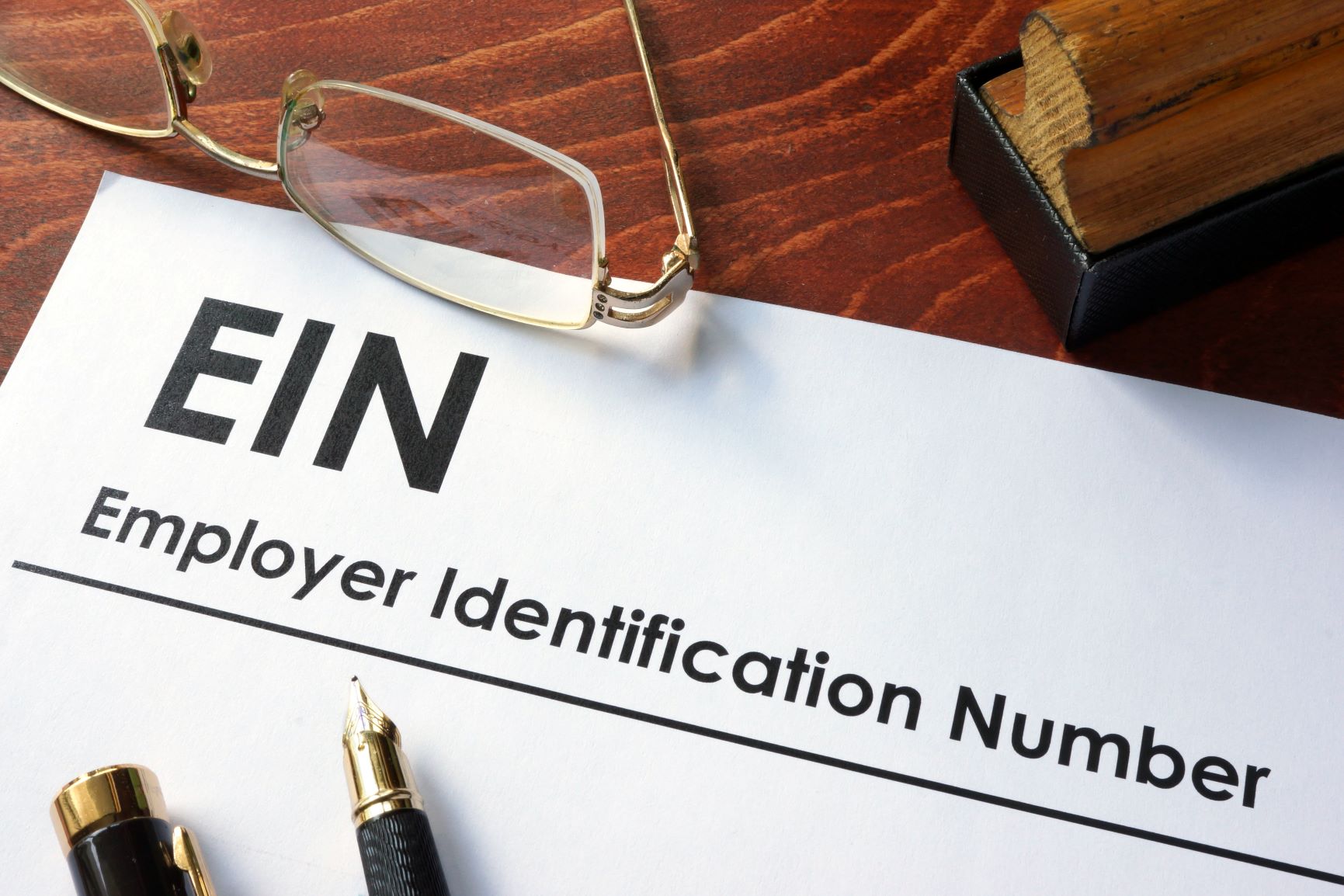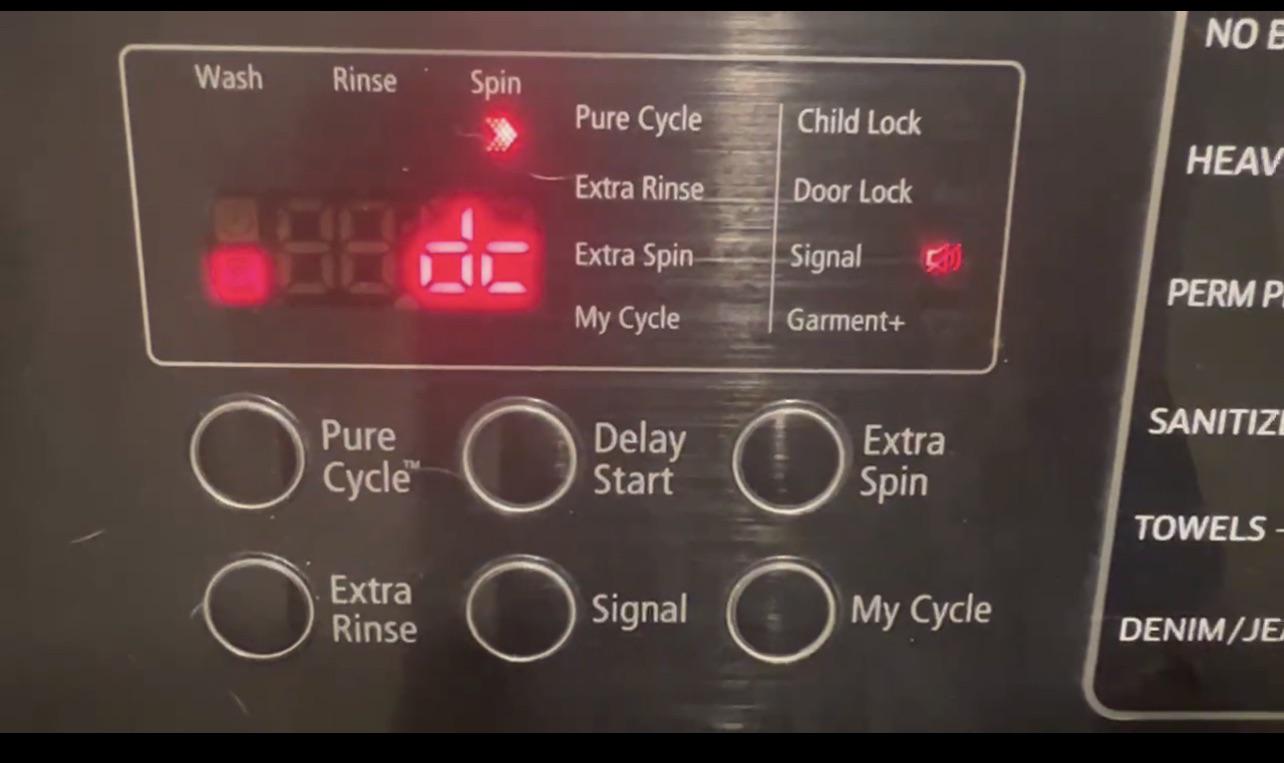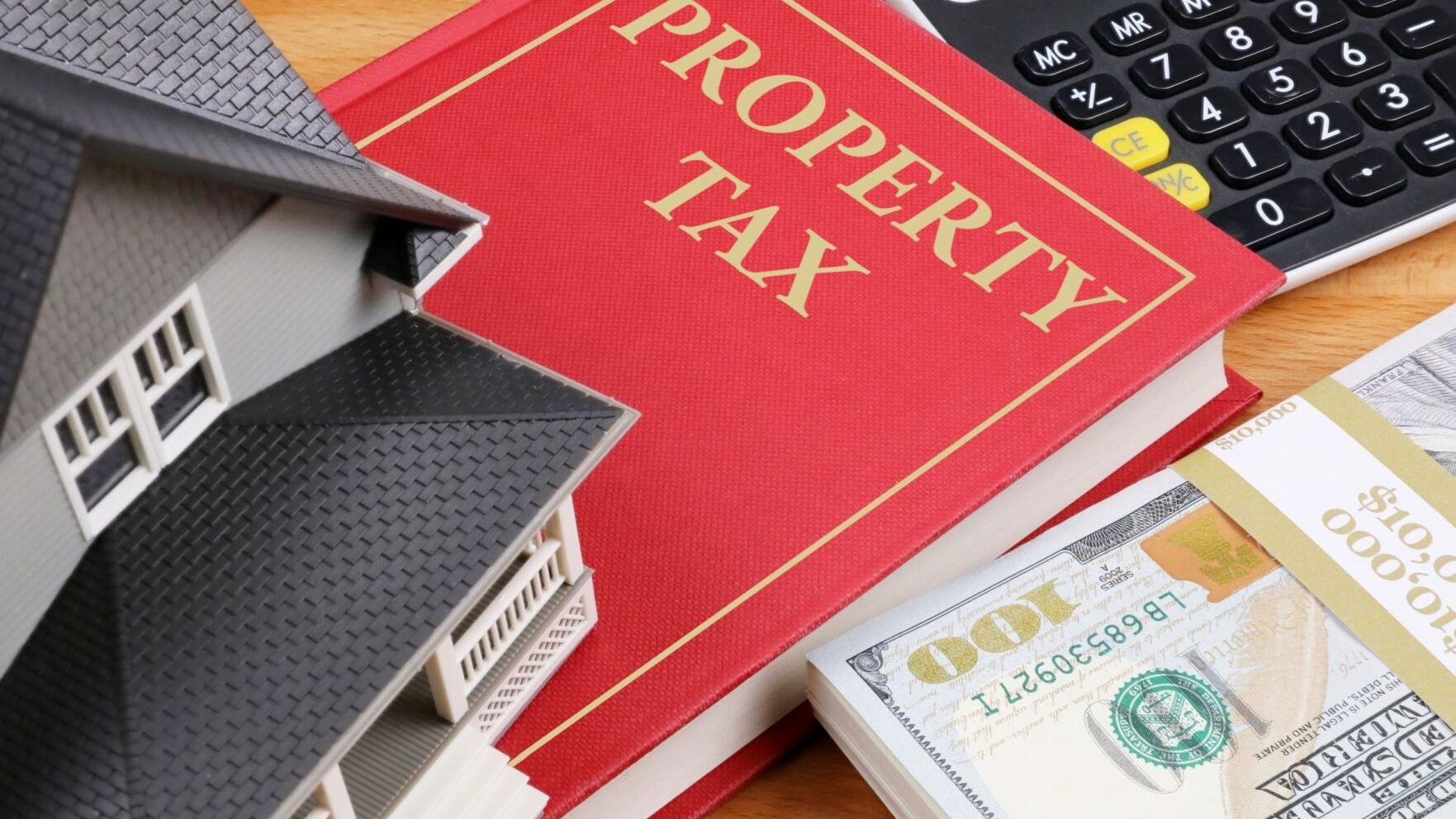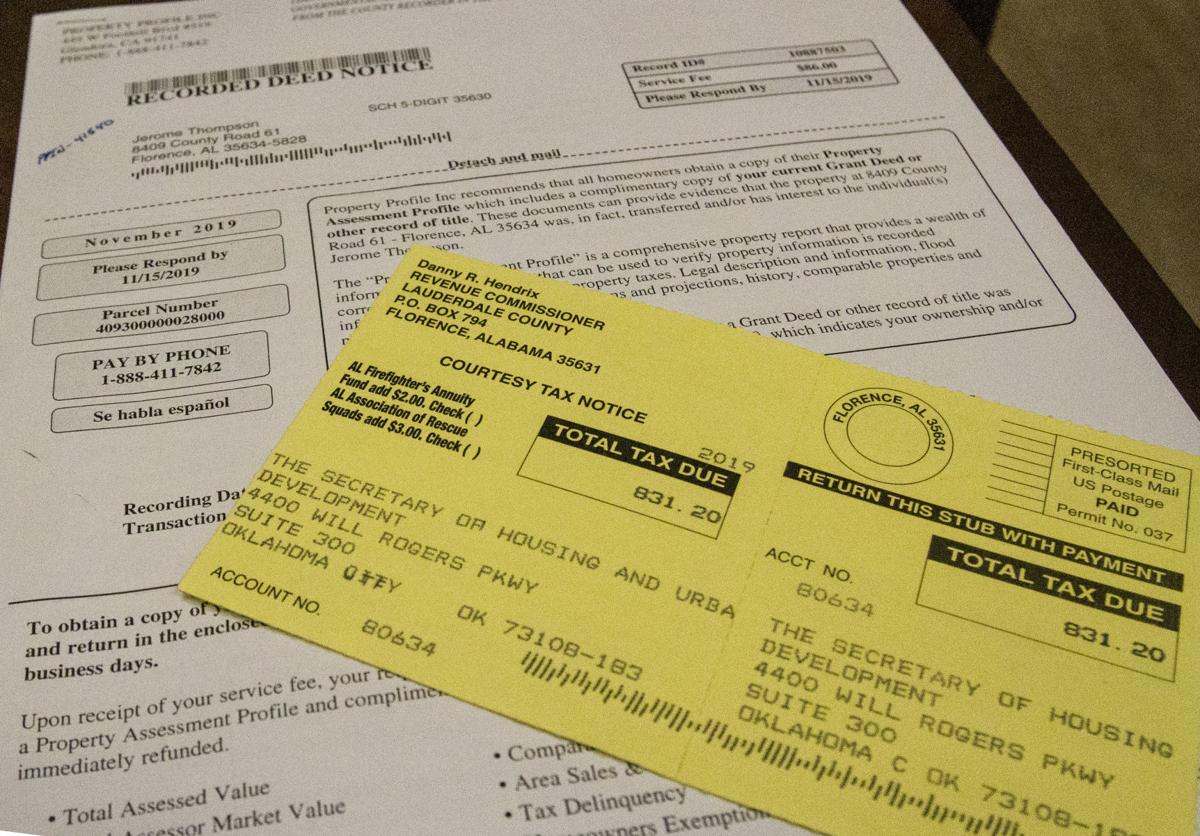Home>Home Maintenance>What Does “Ein” Mean For DC Real Property Assessment Division


Home Maintenance
What Does “Ein” Mean For DC Real Property Assessment Division
Modified: March 6, 2024
Learn the meaning of "Ein" for DC Real Property Assessment Division and its relevance to home maintenance.
(Many of the links in this article redirect to a specific reviewed product. Your purchase of these products through affiliate links helps to generate commission for Storables.com, at no extra cost. Learn more)
Introduction
Welcome to the world of home maintenance! As a homeowner, it’s crucial to familiarize yourself with the various aspects of home maintenance, including the importance of regular upkeep, repair, and renovation. One key factor that plays a significant role in home maintenance is the DC Real Property Assessment Division.
The DC Real Property Assessment Division is responsible for assessing the value of properties in the District of Columbia for tax purposes. This division plays a crucial role in determining property taxes, ensuring that homeowners pay a fair and accurate amount based on the value of their properties.
In this article, we will explore an important term in the DC Real Property Assessment Division: “Ein.” We will delve into what “Ein” means, why it is essential in the context of property assessment, and how it influences property tax calculations. Additionally, we will discuss how to locate the “Ein” for a DC property and debunk common misconceptions surrounding it.
So, if you’re ready to dive into the world of DC real estate and property taxes, let’s get started!
Key Takeaways:
- “Ein” is like a special ID for homes in DC. It helps keep track of important info about each home, like its size and value. This helps make sure property taxes are fair and accurate.
- Finding your home’s “Ein” is easy! You can look it up online, check your assessment notices, or even contact the DC Real Property Assessment Division. Knowing your “Ein” helps you understand your home’s value and taxes.
Read more: What Does Property Assessment Mean
Overview of the DC Real Property Assessment Division
The DC Real Property Assessment Division, also known as the RPA, is an essential entity within the District of Columbia government. Its primary function is to assess the value of properties within the District for the purpose of determining property taxes. The division works diligently to ensure a fair and accurate assessment of properties, which is vital for maintaining a balanced tax system.
The RPA conducts regular assessments of residential, commercial, and industrial properties throughout the District. These assessments involve a comprehensive evaluation of the property’s characteristics, market conditions, and other factors that contribute to its value.
Property assessments are crucial because they serve as the basis for calculating property taxes. By determining the assessed value of a property, the RPA plays a significant role in ensuring that property owners contribute their fair share of taxes to fund various public services and operations within the District.
It’s important to note that the RPA operates independently of the Office of Tax and Revenue (OTR), which is responsible for collecting property taxes. While the RPA determines the assessed value of a property, it is the OTR that computes and collects the actual tax amount based on the assessed value.
The DC Real Property Assessment Division employs a team of knowledgeable professionals equipped with expertise in real estate appraisal and market analysis. These professionals work diligently to maintain accurate and up-to-date property assessments for all properties within the District.
Moreover, the RPA strives to provide transparency and accessibility to property owners by offering online resources and information regarding property assessments and related matters. Property owners can easily access their assessment information, including the assessed value of their property and any changes made to the assessment, through the RPA’s online portal.
Overall, the DC Real Property Assessment Division plays a critical role in ensuring the accuracy and fairness of property assessments in the District. Its work directly impacts property taxes and contributes to the overall functioning and development of the District of Columbia.
Understanding “Ein” in relation to DC Real Property Assessment Division
When it comes to the DC Real Property Assessment Division, the term “Ein” holds great significance. “Ein” stands for “Entity Identification Number” and refers to a unique identification number assigned to each property within the District for assessment purposes.
The “Ein” serves as a key identifier for properties and is an essential component of the assessment process. It is used to track and organize property information, ensuring accurate record keeping and assessment management.
Every property in the District of Columbia, whether residential, commercial, or industrial, is assigned a unique “Ein” by the DC Real Property Assessment Division. This number distinguishes one property from another and allows for easy reference and retrieval of information related to a specific property.
Property information associated with the “Ein” includes the property’s physical characteristics, such as its size, features, and condition. It also includes details about the property’s location, market value, and any recent changes or modifications that may affect its assessed value.
The “Ein” plays a crucial role in property assessment as it helps the DC Real Property Assessment Division maintain accurate and updated records for all properties within the District. This ensures the fair and equitable assessment of properties, which is essential for determining property values and calculating property taxes.
Furthermore, the “Ein” facilitates effective communication between property owners, the DC Real Property Assessment Division, and other relevant entities. Whenever property owners have concerns or questions regarding their assessment or need to update their property information, they can easily refer to their “Ein” to ensure accurate and efficient communication.
It’s important to note that the “Ein” remains constant for a property throughout its existence, even if the property goes through ownership changes or transfers. This allows for continuity in property assessment and ensures that historical data and records are properly maintained.
In summary, the “Ein” plays a vital role in the DC Real Property Assessment Division by serving as a unique identifier for properties in the District of Columbia. It enables accurate record keeping, assists in property assessment, and facilitates effective communication between property owners and the assessment division. Understanding the importance of the “Ein” is essential for homeowners and property owners to navigate the assessment process and ensure fair treatment in property valuation and tax calculations.
Importance of “Ein” in Property Assessment
The “Ein” (Entity Identification Number) plays a crucial role in property assessment within the District of Columbia. Its importance lies in several key aspects that ensure an accurate and fair assessment of properties for tax purposes. Let’s explore why the “Ein” is essential in the property assessment process:
1. Unique Identification:
The “Ein” serves as a unique identifier for each property in the District. With thousands of properties being assessed, it is vital to have a distinct number assigned to each property. This allows for easy tracking and retrieval of property information, ensuring efficiency in the assessment process.
2. Record Keeping:
The “Ein” enables effective record keeping by the DC Real Property Assessment Division. It allows for the proper organization and management of property-related data, ensuring that accurate information is readily available when needed. This includes property characteristics, market value, historical data, and any changes or updates made to the assessment over time.
3. Accuracy of Assessment:
The “Ein” helps maintain the accuracy of property assessments. By having a unique identifier for each property, the DC Real Property Assessment Division can ensure that property information is correctly assigned and attributed to the right property. This reduces the risk of errors or mix-ups during the assessment process, leading to fair and equitable property valuations.
4. Efficient Communication:
The “Ein” facilitates effective communication between property owners and the DC Real Property Assessment Division. When property owners have inquiries, concerns, or need to update their property information, they can easily refer to their “Ein” number. This helps streamline communication and ensures that the correct property information is accessed and addressed promptly.
5. Continuity in Assessment:
The “Ein” remains constant for a property, regardless of changes in ownership or transfers. This allows for continuity in property assessment, ensuring that historical data and records can be accurately maintained. It also helps avoid confusion or discrepancies when transferring property ownership and ensures that the assessment process remains consistent for a specific property.
6. Fair Tax Calculations:
The accurate assessment of properties through the use of “Ein” numbers is crucial for fair tax calculations. Property taxes are calculated based on the assessed value of a property, which is determined by the DC Real Property Assessment Division. Having a unique identifier for each property eliminates disparities and ensures that property owners contribute their fair share of taxes based on the value of their properties.
Overall, the “Ein” plays a vital role in property assessment by ensuring accurate record keeping, facilitating efficient communication, and maintaining fairness in tax calculations. Understanding its importance allows property owners to navigate the assessment process effectively and ensures transparency and accountability in property valuation within the District of Columbia.
Role of “Ein” in Property Tax Calculations
The “Ein” (Entity Identification Number) is more than just a unique identifier for properties within the District of Columbia. It also plays a significant role in property tax calculations. Understanding how the “Ein” influences property tax assessments will provide property owners with valuable insights into how their taxes are determined. Here’s the role that “Ein” plays in property tax calculations:
1. Basis for Property Valuation:
The “Ein” serves as the basis for determining the assessed value of a property. The DC Real Property Assessment Division uses the “Ein” to access property information, including its physical characteristics, location, and market value. This information is crucial in establishing a fair and accurate value for tax assessment purposes.
2. Calculation of Annual Property Taxes:
Property taxes are calculated based on the assessed value of a property. The DC Real Property Assessment Division assigns an assessed value to each property using various factors, such as its size, condition, and market trends. The “Ein” ensures that the correct property is associated with its respective assessed value, allowing for accurate tax calculations.
3. Determining Tax Rates and Exemptions:
The “Ein” is also utilized in determining the applicable tax rate for a property. Different tax rates may apply to residential, commercial, and industrial properties. By identifying the property through its “Ein,” the tax authorities can accurately apply the appropriate tax rate for that specific property type.
Additionally, the “Ein” helps in identifying properties that may qualify for tax exemptions or deductions. Certain properties, such as non-profit organizations or historical sites, may be eligible for tax breaks. The “Ein” plays a crucial role in identifying these properties and applying the relevant exemptions or deductions.
4. Property Tax Bills and Payment:
Once the assessed value and tax rates are determined, property tax bills are generated for each property. The “Ein” is used to match the property with its respective tax bill, ensuring accurate billing and payment processing. Property owners can use their “Ein” to easily locate their tax bills and make timely payments.
5. Appeals and Reassessments:
In cases where property owners believe their assessments are inaccurate, they may choose to file an appeal to contest their property’s assessed value. The “Ein” is utilized in the appeals process to correctly identify and track the property in question. Additionally, if a property undergoes significant changes or improvements, the “Ein” ensures that a reassessment is conducted to reflect its new value.
Overall, the “Ein” is a fundamental component in property tax calculations. It serves as the link between the property’s assessment, tax rates, bill generation, and payment processing. Understanding the role of “Ein” helps property owners comprehend how property taxes are allocated, making them more informed and proactive when it comes to their tax obligations within the District of Columbia.
How to Locate the “Ein” for a DC Property
Locating the “Ein” (Entity Identification Number) for a property in the District of Columbia is a relatively straightforward process. The DC Real Property Assessment Division provides several avenues for property owners to access their “Ein” and obtain the necessary information related to their property assessment. Here’s how you can locate the “Ein” for a DC property:
1. Online Property Search:
The DC Real Property Assessment Division offers an online property search portal that allows property owners to access their property information, including the “Ein.” By visiting the official website of the Division, property owners can enter their property address, tax account number, or square, suffix, and lot information to retrieve their property details, including the “Ein.”
2. Assessment Notices:
Property owners in the District of Columbia receive annual assessment notices from the DC Real Property Assessment Division. These notices include important information about the property’s assessed value, tax rates, and other relevant details, including the “Ein.” Property owners can refer to their assessment notices to find the “Ein” associated with their property.
3. Tax Bills:
In addition to assessment notices, property owners in the District also receive annual property tax bills. These tax bills include the “Ein” of the property for which the taxes are being assessed. Property owners can refer to their tax bills to locate their “Ein” and ensure accurate identification of their property.
4. Contacting the DC Real Property Assessment Division:
If property owners are unable to locate their “Ein” through online resources or their assessment notices or tax bills, they can directly contact the DC Real Property Assessment Division. The division has dedicated customer service representatives who can assist in locating the “Ein” for a specific property. Property owners can reach out via phone or email to inquire about their “Ein” and obtain the necessary information.
It is worth noting that property owners should have their property address or tax account number on hand when contacting the DC Real Property Assessment Division to facilitate a quick and accurate search for the “Ein.”
By utilizing the online property search portal, referring to assessment notices and tax bills, or contacting the DC Real Property Assessment Division directly, property owners can easily locate their “Ein” and access the associated property information and assessment details.
Common Misconceptions about “Ein” in the DC Real Property Assessment Division
The “Ein” (Entity Identification Number) in the DC Real Property Assessment Division can sometimes be misunderstood or surrounded by misconceptions. Clarifying these misconceptions is important to ensure accurate understanding and interpretation of the “Ein” and its role in property assessment. Here are some common misconceptions about the “Ein” in the DC Real Property Assessment Division:
1. The “Ein” is the same as the property address:
One common misconception is that the “Ein” is equivalent to the property’s address. However, this is not the case. While the property address is a crucial piece of information, the “Ein” is a unique identifier assigned to each property for assessment purposes. The “Ein” is used to track and organize property information, ensuring accurate record keeping and assessment management.
2. The “Ein” determines the tax amount:
Another misconception is that the “Ein” directly influences the tax amount for a property. In reality, the “Ein” is used to associate property information and assist in property assessment. The assessed value, tax rates, and applicable exemptions are the key factors that determine the tax amount. The “Ein” serves as a means to identify the property accurately and link it to the appropriate assessment and tax calculations.
3. Changing the “Ein” can alter the property’s assessment:
Some property owners may mistakenly believe that changing the “Ein” for a property can influence the assessment and subsequent tax calculations. However, the “Ein” remains constant for a property, even if there are changes in ownership or transfers. The assessment and tax calculations are based on the property’s characteristics, market conditions, and other relevant factors, not the “Ein” itself.
Read more: Why Did The Real Property Assessment Drop?
4. The “Ein” is only relevant during the assessment process:
While the “Ein” is primarily used during the property assessment process, its significance extends beyond that. The “Ein” serves as an identifier for the property throughout its existence, facilitating efficient communication with the DC Real Property Assessment Division. It remains an essential reference point for property owners inquiring about their assessment, updating property information, or addressing any concerns related to their property.
5. The “Ein” is exclusive to residential properties:
Another misconception is that the “Ein” is only applicable to residential properties. In reality, the “Ein” is assigned to all types of properties within the District of Columbia, including residential, commercial, and industrial properties. All properties require an “Ein” for accurate assessment, regardless of their intended use.
By dispelling these common misconceptions, property owners can have a clearer understanding of what the “Ein” represents in the DC Real Property Assessment Division. It is important to recognize the “Ein” as a unique identifier that helps track and organize property information, assists in property assessment, and facilitates efficient communication between property owners and the assessment division.
Conclusion
Understanding the role of the “Ein” (Entity Identification Number) in the DC Real Property Assessment Division is crucial for property owners within the District of Columbia. The “Ein” serves as a unique identifier for properties and plays a vital role in property assessment, tax calculations, and effective communication between property owners and the assessment division.
The DC Real Property Assessment Division works diligently to ensure fair and accurate property assessments, taking into account various factors such as property characteristics, market conditions, and applicable tax rates. The “Ein” serves as the foundation for these assessments, enabling proper record keeping and accurate property valuation.
Property owners can access their “Ein” through various means, including online property searches, assessment notices, tax bills, and direct communication with the DC Real Property Assessment Division. Locating the “Ein” allows property owners to access important property information, review their assessment details, and properly address any concerns or inquiries related to their property assessment.
It is important to dispel misconceptions surrounding the “Ein,” such as the idea that it determines the tax amount or that changing the “Ein” can alter the property’s assessment. The “Ein” is a unique identifier that provides accurate identification and tracking of properties, but it is the assessed value, tax rates, and applicable exemptions that determine the tax amount.
In conclusion, the “Ein” plays a crucial role in the DC Real Property Assessment Division, facilitating accurate property assessments, fair tax calculations, and effective communication between property owners and the assessment division. By understanding the importance of the “Ein” and its role in property assessment, property owners can navigate the assessment process confidently and ensure their tax obligations are handled accurately within the District of Columbia.
Frequently Asked Questions about What Does "Ein" Mean For DC Real Property Assessment Division
Was this page helpful?
At Storables.com, we guarantee accurate and reliable information. Our content, validated by Expert Board Contributors, is crafted following stringent Editorial Policies. We're committed to providing you with well-researched, expert-backed insights for all your informational needs.










0 thoughts on “What Does “Ein” Mean For DC Real Property Assessment Division”